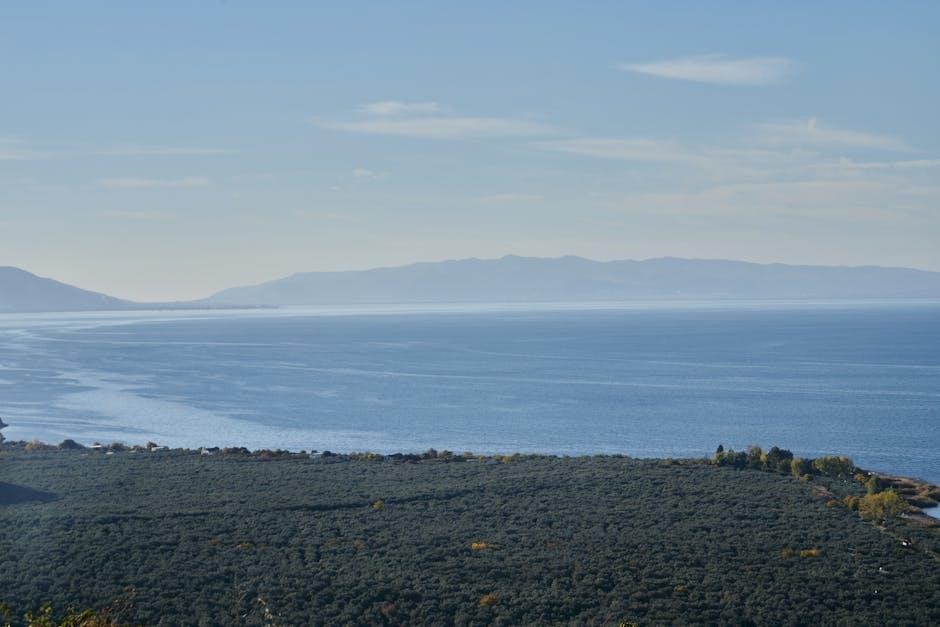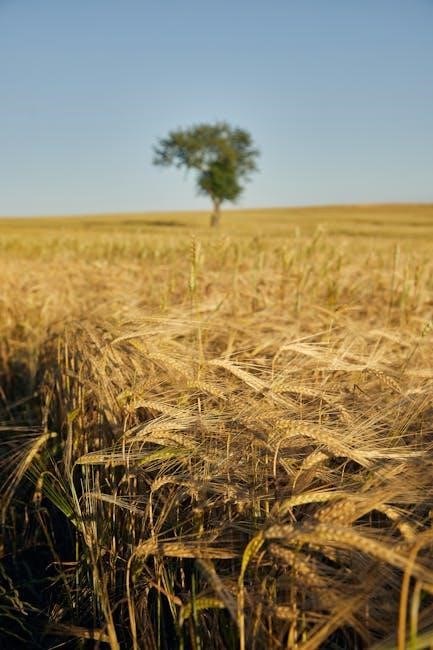What is The Amazing Liver & Gallbladder Flush?
The Amazing Liver & Gallbladder Flush, popularized by Andreas Moritz, is a do-it-yourself protocol intended to remove gallstones. It involves a specific combination of Epsom salts, olive oil, and grapefruit juice. The goal is to cleanse and rejuvenate your body;
What is The Amazing Liver & Gallbladder Flush?
Definition and Overview of the Flush
The Liver & Gallbladder Flush is an alternative remedy designed to eliminate gallstones from the body. Often called a liver flush or gallbladder cleanse, it involves consuming a mixture of ingredients like Epsom salts, olive oil, and grapefruit juice over a short period. The underlying theory is that this process stimulates the liver and gallbladder to release accumulated stones and toxins. Proponents suggest it can improve liver function, boost overall health, and alleviate symptoms associated with gallstones. However, its effectiveness is debated, and potential risks should be carefully considered.
Gallstones are solid particles that form in the gallbladder, potentially causing pain. Understanding gallbladder function and the formation of gallstones is crucial before considering any flush. The gallbladder stores bile produced by the liver.
The Role of the Gallbladder and Bile
The gallbladder, a small organ beneath the liver, plays a vital role in digestion by storing bile. Bile, produced by the liver, aids in the breakdown and absorption of fats within the small intestine. After meals, the gallbladder contracts, releasing bile into the digestive tract to emulsify fats, making them easier to digest. Proper gallbladder function ensures efficient fat digestion, while dysfunction can lead to discomfort and potential health issues related to nutrient absorption and waste removal from the body.

Understanding Gallstones and Gallbladder Function
Formation and Types of Gallstones
Gallstones form when bile, which contains cholesterol, bilirubin, and bile salts, becomes imbalanced. Cholesterol gallstones are the most common type, developing when there is too much cholesterol in the bile. Pigment stones, composed of bilirubin, can occur due to certain medical conditions. These stones range in size from tiny grains to larger masses. Factors like diet, genetics, and underlying health issues can contribute to gallstone formation. While some individuals remain asymptomatic, others experience severe pain necessitating medical intervention to manage or remove the gallstones from the gallbladder.
The Liver & Gallbladder Flush Procedure
Detailed Steps of the Flush (Epsom Salts, Olive Oil, Grapefruit Juice)
The flush involves fasting, followed by consuming Epsom salts, olive oil, and grapefruit juice. This combination is believed to trigger the release of gallstones. Specific timing and dosages are crucial to the procedure.
Detailed Steps of the Flush (Epsom Salts, Olive Oil, Grapefruit Juice)
The procedure typically spans two days, beginning with a day of light eating. On the evening of the first day, Epsom salts are consumed in divided doses, intended to dilate the bile ducts. A mixture of olive oil and grapefruit juice is ingested before bed. This combination aims to stimulate the gallbladder to release stones. The next morning, further Epsom salts are taken, followed by a regular diet later in the day. The expelled “stones” are often examined to assess the flush’s effectiveness. Results are often mixed.
Timing and Preparation for the Flush
Proper timing is crucial for the liver and gallbladder flush. It is often recommended to perform the flush on a weekend to allow for rest and recovery. Several days before the flush, a light, low-fat diet is typically advised to prepare the body. Hydration is also emphasized, with adequate water intake leading up to the cleanse. It is essential to gather all necessary ingredients, including Epsom salts, olive oil, and fresh grapefruit. Consulting a healthcare professional before attempting the flush is always recommended, especially for those with pre-existing health conditions. This ensures safety and awareness.

Potential Benefits of the Liver & Gallbladder Flush
Proponents of the liver and gallbladder flush claim it can remove gallstones. This is often supported by anecdotal evidence. People report seeing green or brown “stones” in their stool after the flush, believing they’ve been cleansed.
Anecdotal Evidence of Gallstone Removal
Many individuals who have undertaken the liver and gallbladder flush report passing numerous green or brown formations in their stool, which they identify as gallstones. These accounts often describe a sense of relief and improved well-being following the procedure. Some individuals even share images of these alleged gallstones as visual proof. However, it is crucial to acknowledge that these anecdotal reports lack scientific validation. Medical experts suggest that these formations are more likely to be byproducts of the flush itself, such as saponified oil, rather than actual gallstones expelled from the gallbladder.
Purported Effects on Liver and Overall Health
Proponents of the liver and gallbladder flush claim it can lead to improved liver function, enhanced digestion, and increased energy levels. They suggest that removing “stones” from the liver and gallbladder allows these organs to function more efficiently; This, in turn, is said to improve overall health by reducing the burden of toxins on the body. Some also believe it can alleviate symptoms like bloating, fatigue, and skin problems. These claims are primarily based on personal testimonials and lack robust scientific backing. It’s important to approach such claims with caution.

Risks and Side Effects of the Liver & Gallbladder Flush
Common Side Effects (Nausea, Vomiting, Diarrhea, Abdominal Pain)
The liver and gallbladder flush carries potential risks. Common side effects include nausea, vomiting, diarrhea, and abdominal pain during the cleansing period. These symptoms are often attributed to the large quantities of olive oil and Epsom salts consumed.
Common Side Effects (Nausea, Vomiting, Diarrhea, Abdominal Pain)
Individuals undergoing a liver and gallbladder flush frequently experience unpleasant side effects due to the nature of the procedure. Nausea, a feeling of sickness with an inclination to vomit, is a common complaint. Vomiting, the forceful expulsion of stomach contents, can also occur. Diarrhea, characterized by frequent and loose bowel movements, is another frequently reported symptom. Abdominal pain, ranging from mild discomfort to severe cramping, may accompany these digestive disturbances. These effects are often attributed to the high doses of Epsom salts and olive oil consumed during the flush.
Serious Complications (Pancreatitis, Cholecystitis, Electrolyte Imbalance)
While proponents tout benefits, the liver and gallbladder flush carries risks of serious complications. Pancreatitis, inflammation of the pancreas, can occur if a gallstone becomes lodged in the bile duct. Cholecystitis, inflammation of the gallbladder, is another potential consequence of gallstone obstruction. Electrolyte imbalance, a disruption in the levels of essential minerals like sodium and potassium, can arise from the large quantities of Epsom salts consumed. Such imbalances may lead to arrhythmia and dehydration. These complications necessitate immediate medical intervention.

Scientific Evidence and Expert Opinions
Currently, there is no robust scientific evidence supporting the effectiveness of the liver and gallbladder flush for removing gallstones. Medical professionals warn against relying on this flush, citing potential risks and a lack of proven benefits.
Lack of Scientific Support for Flush Efficacy
While anecdotal evidence suggests gallstone removal, scientific studies have not validated the efficacy of the liver and gallbladder flush. Experts emphasize that the “stones” expelled during the flush are often composed of solidified olive oil, not actual gallstones. Conventional medical imaging rarely confirms gallstone reduction post-flush. The purported benefits lack rigorous scientific backing, urging caution and consultation with healthcare professionals.
Medical Professional Warnings Against the Flush
Medical professionals express serious concerns regarding the Liver & Gallbladder Flush due to the potential health risks. They warn against the lack of scientific support and the possibility of complications such as pancreatitis or cholecystitis. The flush may lead to electrolyte imbalances, dehydration, nausea, vomiting, and abdominal pain. Furthermore, it may delay necessary medical treatment for genuine gallbladder issues, so consulting a doctor is vital.
Alternative Approaches to Gallbladder Health
Instead of risky flushes, focus on evidence-based strategies. Dietary changes, including fiber-rich foods and healthy fats, can support gallbladder health. Medical treatments, such as cholecystectomy, are available for gallstones causing significant symptoms or complications.
Dietary Changes for Gallbladder Support (Fiber, Healthy Fats)
Supporting gallbladder health through diet involves incorporating more fiber from fruits, vegetables, beans, and whole grains. Fiber aids digestion and can help prevent gallstone formation. Including healthy fats in moderation, such as those found in olive oil and avocados, can also be beneficial. A balanced diet reduces the risk of gallbladder issues. Foods such as fruits, vegetables, beans, and whole grains can support liver and gallbladder health. Dietary habits that support your gallbladder health include eating more fiber from these foods.
Medical Treatments for Gallstones (Cholecystectomy)
When gallstones cause significant pain or complications, medical treatments are necessary. Cholecystectomy, the surgical removal of the gallbladder, is a common solution. This procedure effectively eliminates gallstone-related issues. It is often recommended for recurrent severe pain after fatty food. While lifestyle changes and diet can help prevent gallstones, sometimes medical intervention is the best course. This procedure helps avoid potential risks, and is often the most effective way to manage symptomatic gallstones, offering long-term relief by preventing future attacks.
Long-Term Lifestyle Changes
Long-term lifestyle changes are crucial for preventing gallstone formation. Dietary habits that support gallbladder health include eating more fiber. Focus on foods such as fruits, vegetables, beans, and whole grains to maintain a healthy gallbladder.
Preventative Measures for Gallstone Formation
Adopting preventive measures is vital for long-term gallbladder health and reducing the risk of gallstone formation. Dietary changes play a crucial role, with an emphasis on increasing fiber intake through fruits, vegetables, and whole grains. Maintaining a healthy weight, especially for women, also lowers the risk. Regular exercise can further contribute to gallbladder wellness. Staying hydrated ensures proper bile flow, preventing stagnation. Limiting fatty foods and processed foods helps reduce the burden on the gallbladder. Consult a healthcare professional for personalized advice on preventing gallstones and maintaining optimal liver function.
Ultimately, the Liver & Gallbladder Flush involves potential risks like nausea and abdominal pain. Scientific evidence supporting its efficacy remains limited. Consider consulting healthcare professionals for advice. Lifestyle adjustments may be more beneficial.
